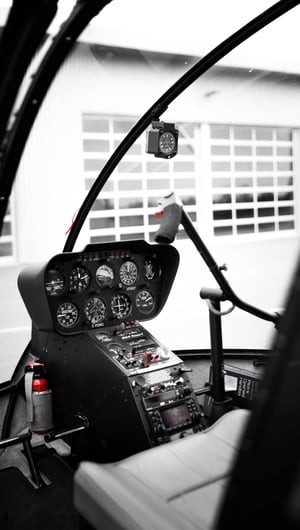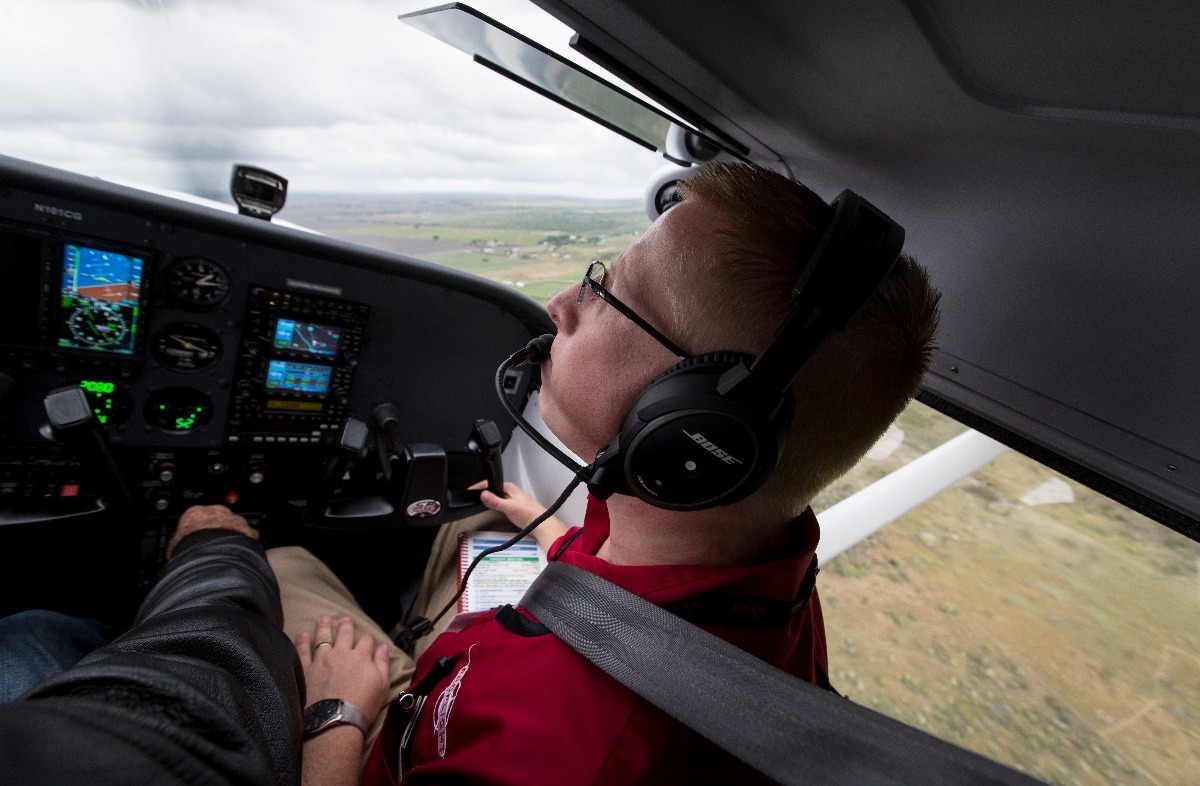What’s the Hold up on Your Helicopter License?
You’re mesmerized every time you hear one. You pull off to the side of the road every time you see one (admit it, you do). And you keep looking at all of the advertisements trying to convince you that now is the time to learn how to fly a helicopter. Well, my friend, what’s stopping you?
The cost? Maybe. Your spouse? Possibly. The time commitment? Perhaps. Or, maybe you’re reluctant to learn to fly something that you’ve been told—through folklore and crusty old helicopter pilots—requires the skill and dexterity of an accomplished neurosurgeon. It doesn’t.
However, as you start your rotorcraft journey, there are a few things to keep in mind that will make the ride to the coveted helicopter/rotorcraft rating an enjoyable experience. And, while this article will convey shortcuts to success for the challenges of cost, time, and skill; sadly, you’re on your own with any spousal obstacles.
If it flies, floats, or…well, you know the rest, then it’s likely going to cost you a few bucks. The trick is to maximize your value, get the best training you can find, and become a safe helicopter pilot—all while having fun in the process. If you are already fixed-wing rated, then you know that the lowest hourly training cost does not necessarily translate into the best value. The same is true with helicopter training. The hourly cost is affected directly by the type of helicopter, the location of the flight school, the experience of the instructors, and a few related factors.
The School
When beginning your flight school search, ask yourself if you will have time to fly daily, or—if like most—work gets in the way of fun and you will be doing your training once or twice a week. If you fall into the latter category, you will want to find a training center that is a reasonable drive from your home or work. There’s no need to add unnecessary travel time to an already limited time budget.
Since helicopter flight schools are not as prevalent as fixed-wing schools, your search may result in only one or two nearby locations. You should visit each school. Look around. Chat with other students. And, most importantly, spend time with one of the flight instructors to get insight into the school and its level of professionalism. Does this look like a facility that takes flight instruction seriously, or is training a secondary, potentially less important aspect of the business? Finally, look at the helicopters the school uses for its flight training. Do they seem clean and well maintained? I equate it to visiting a restaurant for the first time. Are the floors clean? The staff courteous? Or, do you get the feeling that you are an unwanted interruption from their smoke break?
We know that most instructors are consummate professionals, but with just a slight sadistic streak. After all, if they didn’t have that quality, they probably would be testing the viscosity of bitumen instead of training students into submission. In any case, they should present an aura of confidence and calm as they talk to you about the virtues of training with them and their school. While visiting each school, try to chat with other students to get their insight into the level of training they are receiving. Do they seem pleased, frustrated, or (hopefully) enthusiastic?
Related Content: Tips for the Aspiring Helicopter Pilot Before You Begin Flight Training
The Helicopters
You will find that most helicopter flight schools will utilize either a Robinson R22 or a Schweitzer 300 helicopter (or previously-manufactured variants) for their training. Both of these helicopters are piston powered and quite capable as trainers, but which one is right for you?
The Robinson R22 (referred to lovingly as the “Robby”) is a two-place, single-piston-engine aircraft with a semi-rigid, two-bladed main rotor system and a two-bladed tail rotor. Most people who set their eyes on an R22 helicopter for the first time equate it to a “toy.” It’s anything but that.
 One of the other unique aspects of Robinson helicopters is the “T-Bar” cyclic control. Instead of the more conventional, floor-mounted cyclic sticks, the “T-Bar” is a teetering bar that emerges from the console between the seats. The simplicity, ease of entry and exit to the helicopter, and the weight saving aspects of this design are nothing short of brilliant. While compared to the floor-mounted cyclic, you may think it to be more difficult to control. In actuality, it only takes a short time to get used to this unique cyclic. Don’t let it scare you. When you're learning to fly a helicopter, there will be plenty of other opportunities to be afraid. It’s all part of learning to respect the ship and become a safe helicopter pilot.
One of the other unique aspects of Robinson helicopters is the “T-Bar” cyclic control. Instead of the more conventional, floor-mounted cyclic sticks, the “T-Bar” is a teetering bar that emerges from the console between the seats. The simplicity, ease of entry and exit to the helicopter, and the weight saving aspects of this design are nothing short of brilliant. While compared to the floor-mounted cyclic, you may think it to be more difficult to control. In actuality, it only takes a short time to get used to this unique cyclic. Don’t let it scare you. When you're learning to fly a helicopter, there will be plenty of other opportunities to be afraid. It’s all part of learning to respect the ship and become a safe helicopter pilot.
The Schweitzer 300 is a derivative of the original Hughes 269B model. This helicopter is certified as a three-seat aircraft, which means it is quite comfortable for two larger peeps. If you are large in girth and weight, the 300 will be a better choice for you than the R22, which has a seat limit of 240# (due to crumple zones and crashworthiness certification). The R22 also has a narrower cabin than the Schweitzer.
The Schweitzer utilizes a fully articulated, three-bladed main rotor system and a two-bladed tail rotor. There are advantages and disadvantages both to two-bladed and to three-bladed rotor systems. We would have a better chance of proving who built the Pyramids and how than concluding which of the two rotor systems are better. The bottom line is that they will both get you in the air.
Ultimately, aircraft availability at your chosen flight school probably will determine what you learn to fly first. Either way, you will be in for the ride of your life. As they say, “it’s the most fun you can have with your clothes on.”
Learning to Hover
You can do it. You just don’t think you can when you are handed over the controls for your first hover lesson. And your second lesson. And probably the third lesson too. It is no doubt one of the most frustrating aspects of learning to fly a helicopter. Yet, since every flight begins and ends in a hover, Mr. Obvious would say it is important to learn and learn well. Mr. Obvious is obviously right.
What makes hovering a challenge? You have multiple forces in three dimensions acting on the helicopter. The rotor is spinning and—because of something called gyroscopic precession—the resulting change in the rotor disc happens 90 degrees out of phase from the control input. Simply put, there is a slight delay from the time you physically move the cyclic to make a correction to the time it actually takes effect. Generally, as an uninitiated student, you don’t perceive the change taking place, so you make a larger control input in that same direction only to finally have the initial input take effect. Then, you move the control in the opposite direction to correct the overcontrolling input. This is the point at which the helicopter begins its pendulum motion. Your brain now believes you are about to crash. That is, of course, until your instructor masterfully takes control. In about five nanoseconds he or she has the helicopter stabilized in a perfect hover. How did that happen? Practice, my friend. Practice.
Related Content: 4 Flight Training Tips for the Helicopter Student Pilot
It's like riding a bike. Do you remember the first time you tried riding a two-wheeler bicycle with no training wheels? You would watch other kids do it. You wondered why you couldn’t. You continually tried. You wanted to give up. You felt you weren’t cut out for this magical two-wheel odyssey.
Well, learning to hover is a similar experience to when you learned the two-wheeler—albeit, the bike is a bit less expensive to learn. Without any warning, you all of a sudden found yourself balancing on two wheels and riding your bike like a pro. This is exactly how most students progress in their hover training. All of a sudden—usually around the ten-hour mark (give or take a few hours)—everything falls into place, and you realize you are hovering with no help from the savior sitting next to you.
Related Content: Behind the Scenes of the VTO Helicopter Trainer
So, go for it!
Your friends might say you’re crazy. They will tell you it costs too much money. Many will say it’s too dangerous. But, as you stroll in your neighborhood and you hear the familiar womp womp of the rotor blades overhead, you’ll know that your helicopter license is worth the cost, the time, and the challenge. With the right combination of helicopter, instructor, and school, the only thing stopping you will be convincing the spouse that this is right for you. And, of course, don’t forget to remind him or her: “it’s the most fun you can have with your clothes on.”
Sam Winer caught the flying bug at an early age; he soloed 2 aircraft on his sixteenth birthday (a Piper PA28-180R Arrow and a Cherokee 140). Now, he has his commercial rating for fixed-wing and rotorcraft, with just under 900 hours total time. He also owned a helicopter flight school in the Chicago area for over 11 years.
In addition to his day job, Sam can be heard on radio dials in the Chicago, Milwaukee, and Salt Lake City markets as a part-time traffic reporter.
Share this
You May Also Like
These Related Articles

Behind the Scenes of the VTO Helicopter Trainer

6 Low-time Pilot Jobs That Build Flight Hours
